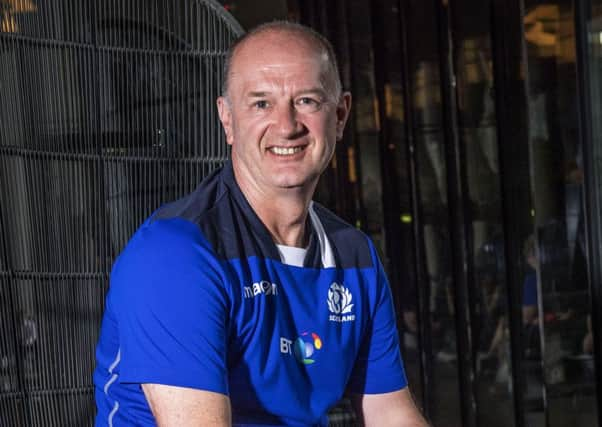Scotland rugby doctor James Robson's orders: cut injury risk


As ever, it will clash with the birthday of his youngest daughter, who turns 20 in June. It will be the 17th occasion he has not been at home for the celebrations, although rugby-mad Emma has long been understanding of that.
An extra element of emotion comes as Robson reflects on the fact that his first-ever Scotland tour was also a transatlantic one and he recalls sitting on the plane to Vancouver in 1991 with Doddie Weir, who deeply saddened but also greatly inspired the Scottish rugby when revealing his MND diagnosis last year.
Advertisement
Hide AdAdvertisement
Hide AdIt has been a long, gruelling season for the players and, in turn, the medical staff who work tirelessly to keep them patched up, but Robson is as enthusiastic as ever about accompanying the Scotland team on another foreign trip in addition to the six Lions tours he has also been on.
The season rolls on into the summer but Glasgow’s elimination in the Guinness Pro14 semi-finals a week ago gives a window to reflect on another attritional year on the field and in the treatment rooms.
Robson, of course, has been, along with Dr Willie Stewart of Glasgow’s Southern General, been at the forefront of the campaign to highlight and deal with the issue of concussion in rugby and sport more widely over the past few years.
“There isn’t a day goes by when I’m not dealing with the subject,” said Robson.
“But what I would say is that I’m pleased with the amount of time and effort that’s going in to looking at it. For many years the culture was that it was a joke. It isn’t a joke. But I truly believe we’re still in the infancy of understanding what the implications are. So in the meantime it’s beholden on us to look at any process that would, in our opinion at the moment, make things safer.”
Earlier this season, Scotland captain John Barclay highlighted the fact that, despite the huge advances in head injury assessment protocols in recent seasons, there was still an element of personal responsibility.
Barclay, pictured, revealed that he passed all the return-to-play tests at his club Scarlets weeks after suffering a head knock, but still didn’t feel right himself and stood himself down for a bit longer.
“That’s the interesting thing with concussion,” said Robson. “You can have one where you do pass all the things that we do and John was entirely right. That’s why we are beefing up the educational aspect. One of the things I put in last year was ‘protect yourself and protect your team-mate’.
Advertisement
Hide AdAdvertisement
Hide Ad“Because the players are now key to spotting concussion. I could get a player coming up to me at pitchside and saying ‘so and so isn’t right Doc, he needs to come off’. You ask why and they say ‘well, he never gets the lineout codes wrong and he just has. Twice’.
“With both of the head injuries I dealt with in Dublin this year [to Blair Kinghorn and Ryan Wilson] it was the coach who passed on important information he’d spotted watching on the TV screen. Which is great. That wouldn’t have happened five years ago. It’s got to be better.”
Every Six Nations team went into this year’s tournament with big injury lists and missing high-profile stars, which focused the debate on rugby’s general injury issue, with most professional clubs being without around a quarter of their squad at the height of the season. “It should never be accepted,” said Robson. “We’ve got to look at the game, as we have with concussion. It’s hard to envisage a contact sport where injury is not going to be a factor but we should not accept high levels of injury. We’ve got to ask why are they occurring.”
Scotland had a specific raft of front-row injuries this season but Robson believes this was bad luck rather than any systemic issues due to the wide variation of the problems, from the standard neck problems that are common for front-rowers, to WP Nel’s broken arm, to Zander Fagerson dropping a weights bench on his foot. New coaching teams took over at Scotland, Glasgow and Edinburgh last summer, which Robson suggests could, blamelessly, have led to a temporary increase.
He said: “There is a really interesting stat which came out of Australia which highlighted that whenever you get a new coaching set-up, the following season there is a spike in injuries and then it slowly comes down to the norm again. That’s to do with different training techniques coming in, changes in focus. So you get a lag period where players get used to doing that volume or type of exercise.
“But, in short, we can’t accept that level of injury. We’ve got to strive, on both the medical and coaching side. Because the coaches don’t want this, they want as many of their players as fit as possible.
“There are higher powers than myself who look at the laws of the game, and World Rugby should be commended. Fifteen years ago the focus was on serious neck injuries and, touch wood, that is something which has been reduced.”